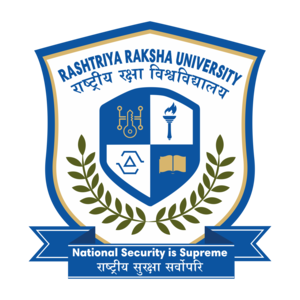
Nirbhaya, Hyderabad Police and Due Process of Law
NIRBHAYA, HYDERABAD POLICE AND DUE PROCESS OF LAW
- Adrija Guhathakurta, National Law University, Odisha
“Whatever disagreement there may be as to the scope of the phrase due process of law there can be no doubt that it embraces the fundamental conception of a fair trial, with opportunity to be heard.”
-Oliver Wendell Holmes, Jr.
On a cold winter night, while travelling by bus in the capital city of a country known for its cultural diversity and secular integrity, a young woman in her early twenties was brutally gang raped and assaulted. Few days later, she took her last breath in the hospital where she was admitted. The citizens went into a mode of constant protests and rebellion questioning the safety standards of a woman in the country. The newspapers and media began to collectively call her by a name that later on became the epitome of justice for violence against women in the country. The name was Nirbhaya. The capital city was Delhi. The country was India.
The victim was raped by a total of six men, all of whom were convicted by the court including the juvenile. Mukesh Singh, Akshay Thakur, Pawan Gupta and Vinay Gupta were sentenced to death on September 2013. Ram Singh, who happened to be the bus driver, ended up committing suicide. Before the final declaration of the sentence the country became impatient which led to uproar about justice being delayed unnecessarily.
An outrage was, once again, sparked all across India when a twenty six year old veterinary doctor was gang raped and murdered in Shamshabad, near Hyderabad, on November 2019. But this particular incident led to an interesting development when the Hyderabad Police encountered four individuals who were suspected of being the culprits in the case. The city rejoiced and the country began to glorify their act by terming it as the right execution of justice. The most important fact to be noted, in this situation, is that the four men were still under investigation and the decision of encounter was impromptu.
The cases mentioned above definitely highlight the growing concern that violence against women needs to be addressed seriously in the country but justice should not be delivered at the cost of disrespecting basic human rights enjoyed by an individual and the same shall be done without having to discredit the due process of law which refers to the requirement of respecting all the legal rights that an individual has been granted by the state. This helps in maintaining a healthy balance between the power of law of the land and the minimum security that a person must have against it.
It took almost four years for all the three courts, trial, high and supreme, to finally come out with a verdict for the Nirbhaya case. Once the sentence is declared by the Supreme Court, it is allowed in the Indian Constitution for review petitions to be filed by the convicts within a time period of 30 days. The law further allows for condonation in case the convict gives a reason that can be considered as a convincing means for delay in the execution of the sentence and this provision was exploited by the Nirbhaya convicts to the fullest. Reviews were further delayed due to various circumstances and they were finally dismissed by the Supreme Court on July 9, 2018. But Akshay filed a review petition one and half year later which was further dismissed by the court in December 18, 2019.
The whole timeline of the Nirbhaya Case execution goes this way:
December 16, 2012- Commission of the crime
January 2, 2013- Filing of Charge Sheet by the Delhi Police
January 3 – September 13, 2013: Fast Track Trial
November 1, 2013 – March 13, 2014: Delhi High Court Trial Verdict
March 15, 2014 – May 5, 2017: Supreme Court Verdict.
This whole process was time and patience driven but the need of the hour is to understand that in a country where the judges & cases ratio is as ludicrous as 19 to 1000 then such cases of importance ought to take time as awarding capital punishment is not a mere act of seeking revenge. It takes thorough deliberation and investigation followed by proper implication of legal intricacies through trials at court. But sheer act of vengeance can never be the correct path to justice as that would merely lead us back to the initial age of human catastrophe when, according to Hobbes, humans were not guided by their sense of conscience instead were controlled by their emotions leading to utter chaos and devastation.
The action of the Hyderabad Police comes under the context of “extra-judicial killings” as put forth by Supreme Court in the case of People’s Union of Civil Liberties v State of Maharashtra, 2015 where the Supreme Court declared that, “it is mandatory for a magistrate to investigate so-called encounter deaths to ensure that investigations into police encounters are carried out effectively and independently.” According to Indian law, police do not have the authority to pronounce verdict regarding a criminal’s action. It is under the jurisdiction of the court to declare someone guilty or otherwise.
According to section 96 of IPC, nothing can be deemed to be an offence which has been done while exercising the right of private defense and section 100 of IPC lays down the criteria for such exceptions one of which states that an individual can exercise his/her right of private defense in case one feels there is reasonable apprehension of being subject to grievous hurt or injury. It is established that at the time of investigation one of the suspected individuals somehow managed to grab hold of the gun of one of the police officers and used it as a means to threaten the officers on ground as he tried evading the arrest while it hasn’t still been concretely established if there was any immediate apprehension of grave injury being caused to anyone or not. According to section 46 of CRPC, a police officer may encounter a suspected or an accused individual if he/she forcibly tries to restrict the arrest or flee from the site but such should be allowed only if the police have already used “all means necessary to affect the arrest.” Whether the application of the same was initiated at the encounter site or not is another ambiguity that remains regarding the action of the police officers. Further, section 46 of CRPC also states that a police has no right to cause someone’s death who has not yet been accused of an offence which is punishable by death or has been granted imprisonment of life. But this provision has been misinterpreted many a times to mean that in such cases, where a convict has been sentenced to death or has been awarded life imprisonment, it is justified for a police officer to indulge into “extra-judicial killings”. In the Supreme Court case of 2015, a 16 point guideline list was put forth which the Hyderabad police officers will have to pass in order to come clean and restore humanity’s faith in the fundamental right that forms the basis for human existence in the country, i.e., Article 21 or Right to life which is an inherent right that an individual enjoys and the state cannot take that away unless it is in accordance with the due process of law.
Unlike in the Nirbhaya Case, the Hyderabad police was not in any way bound to encounter the suspected individuals while they were not declared by the court as being actually responsible for the crime at hand. As the case may be, even if they were to be declared as convicted by the court, the police would still be in no position to initiate open fire against the culprits unless authorized. The word ‘authorization’ is important to note here. The reason why such an authorization is required is because an action as grave as murder, even if it is of a convicted rapist, can be mistreated. This can lead to grave misuse of the right to encounter leading to killing of innocent individuals even in the name of sheer personal vengeance. This would destroy the very purpose of having law and order in the society. The whole society would then survive solely on the theory of retribution that too based on mere set of assumptions which would surely lead to a major downfall in societal harmony. Due process of law has been brought to existence for avoiding exactly what the society is reaping today.
REFERENCES :-
1. People’s Union of Civil Liberties v State of Maharashtra [2015].
2. Section 96, Indian Penal Code.
3. Section 100, Indian Penal Code.
4. Section 46, Criminal Procedure Code.
5. Jeevan Prakash Sharma, ‘Nirbhaya Case: How Convicts and Courts Contributed to Delay Justice’ (Outlook, 23 Dec 2019) <https://www.outlookindia.com/magazine/story/india-news-nirbhaya-case-seven-years-and-counting-10-reasons-why-justice-has-been-delayed/302502> as accessed 8 April 2020.
6.Prakash K Dutta, ‘Why Killing of 4 Rapists by Hyderabad Police is no Cause for Joy’ (IndiaToday, 6 Dec 2019) <https://www.indiatoday.in/news-analysis/story/why-killing-of-4-rape-accused-by-hyderabad-police-is-no-cause-for-joy-1625755-2019-12-06> as accessed 8 April 2020.












